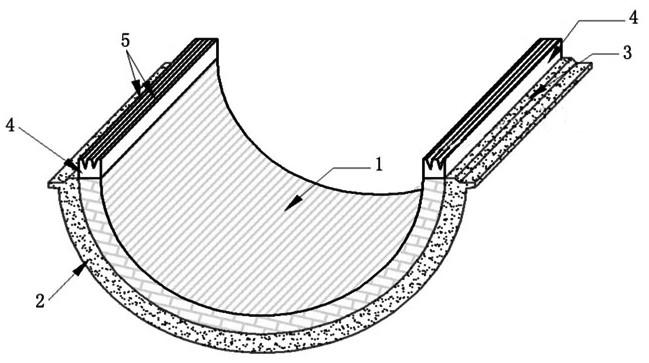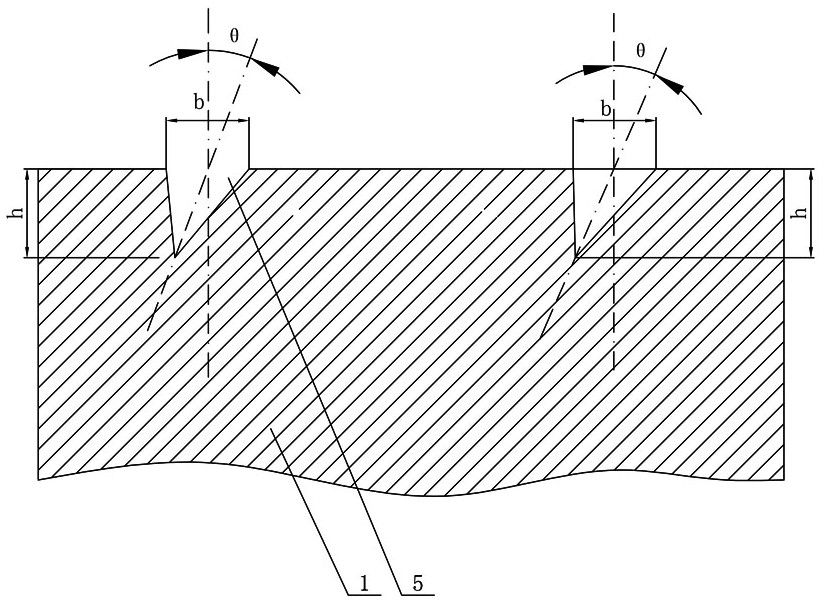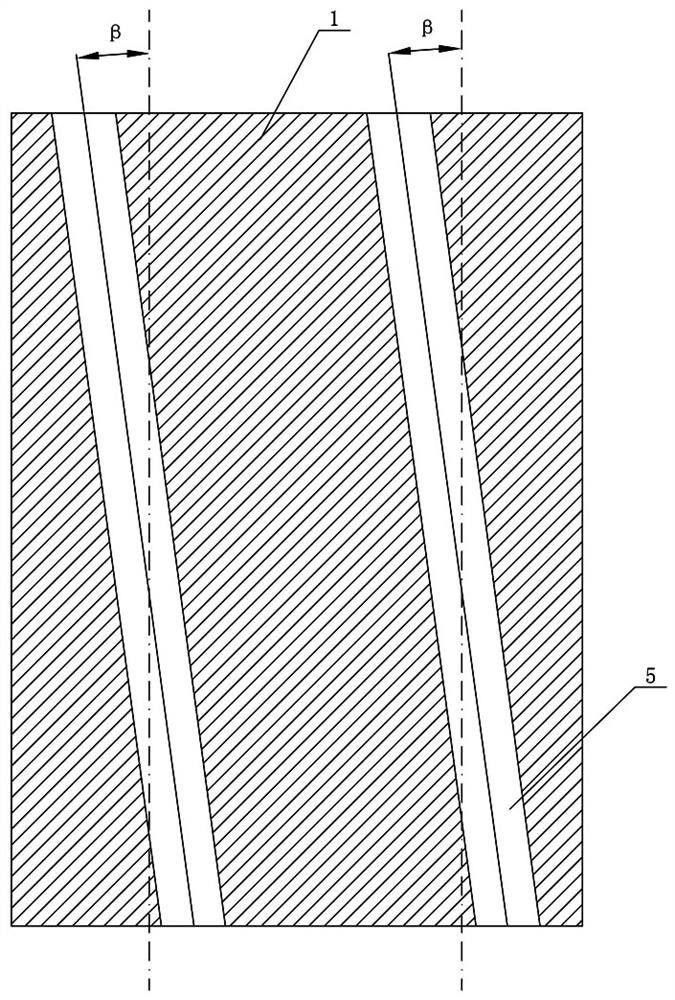A kind of cutting and grinding processing method of thick FRP laminate
A technology of cutting, grinding and processing methods, applied in metal processing, manufacturing tools, metal processing equipment, etc., can solve problems such as residual deformation, plastic deformation, and temperature gradient in thermal conductivity
- Summary
- Abstract
- Description
- Claims
- Application Information
AI Technical Summary
Problems solved by technology
Method used
Image
Examples
Embodiment Construction
[0026] The present invention will be further described in detail below in conjunction with the accompanying drawings and specific embodiments.
[0027] Figure 1 to Figure 4 It shows an embodiment of the cutting and grinding processing method of the thick FRP laminate of the present invention, specifically cutting and grinding the blade heel after the wind power blade shell is formed, including the following steps:
[0028] S1: Cut the vacuum bag film with a tool on the protruding part 4 of the flange platform 3 of the thick FRP laminate 1 beyond the shell mold 2;
[0029] S2: Carry out scribing marks on the surface to be processed that is higher than the component 4, and determine at least two marking lines;
[0030] S3: Carry out vertical grooving along the marking line with a cutting machine to form a shallow groove 5, the length of the shallow groove 5 is consistent with the length to be processed;
[0031] S4: Use an angle grinder to grind the surface of the area where ...
PUM
 Login to View More
Login to View More Abstract
Description
Claims
Application Information
 Login to View More
Login to View More - R&D
- Intellectual Property
- Life Sciences
- Materials
- Tech Scout
- Unparalleled Data Quality
- Higher Quality Content
- 60% Fewer Hallucinations
Browse by: Latest US Patents, China's latest patents, Technical Efficacy Thesaurus, Application Domain, Technology Topic, Popular Technical Reports.
© 2025 PatSnap. All rights reserved.Legal|Privacy policy|Modern Slavery Act Transparency Statement|Sitemap|About US| Contact US: help@patsnap.com



